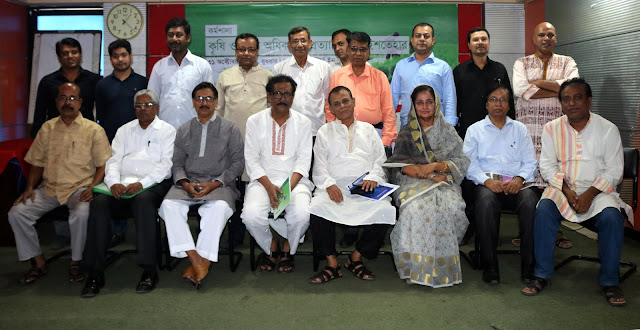Bangladeshi protest intensifies against Rampal coal plant
CLIMATEHOME
By Rafiqul Islam in Dhaka | Published on 03/11/2015, 5:54pm
Environmentalists and left-wing parties warn project threatens the unique biodiversity of nearby Sundarbans mangrove forest
 |
| The Sundarbans are home to 4 million people, as well as a rich range of wildlife (Flickr/Frances Voon) |
Environmentalists have intensified protests in Bangladesh
against a planned coal-fired power plant near the world’s largest
mangrove forest.
The Communist Party of Bangladesh (CPB) and the Socialist Party of
Bangladesh (SPB) recently concluded a 5-day “Road March to Save the
Sundarbans” with a call to save the sensitive ecosystem.
A nationwide demonstration against the Rampal plant, which is located
14km from the World Heritage Site, is planned for 26 November.
Speaking at a press conference in capital Dhaka on Tuesday, CPB
president Mojahidul Islam Selim threatened further action if the
government does not stop work on the project by the end of the month.
In a country hungry for modern energy, campaigners are nonetheless
rising up to protect the home of Bengal tigers and endangered Irrawaddy
river dolphins.
“We are not against coal-based power plants, because we need power
for development,” said Hasan Mehdi, executive director of Khulna-based
Coastal Livelihood and Environmental Action Network (CLEAN). “But the question is why the power plant should be set up near the
Sundarbans, a world heritage site? We have many places to set up such a
coal-fired power plant.”
The proposed 1,320MW power station is a joint venture of national
Bangladeshi and Indian companies. They are publishing advertisements in
daily newspapers, insisting that Rampal poses no threat to the
Sundarbans.
Nearly a third of Bangladeshis have no access to electricity and
demand is increasing about 6% a year. Rampal would increase the
country’s power capacity by more than 10%. At present, it has 12,000MW installed, mostly fuelled by natural gas. To cut dependency on gas in power generation, the government is
planning to build eight large and 10 small coal-fired stations by 2021.
 |
| The Sundarbans are the world’s biggest mangrove forest, spanning the coastline of India and Bangladesh (Wikimedia Commons) |
The National Committee to Protect Oil, Gas, Mineral Resources, Power
and Port of Bangladesh is backing the counter-protest with a national
convention in the capital on 14 November to mobilise public opinion in
favour of the plant.
At a recent press conference in Dhaka, energy minister Nasrul Hamid
claimed that modern ultra-super thermal technology would be used, so the
plant would not pollute surrounding areas.
Green campaigners are not convinced.
Anu Muhammad, activist and economics professor at Jahangirnagar University, accused the government of spreading misinformation. “Defying all protests and refusing to hold a proper debate over the
issue, the government is going ahead with the coal-fired power project.
Once the project is implemented, it will destroy the Sundarbans,” he
said.
The plant is expected to produce 750,000 tonnes of fly ash and
200,000 tonnes of bottom ash a year, according to the environmental
impact assessment (EIA). This contains pollutants like sulphur, arsenic, mercury, lead, chromium and cadmium as well as greenhouse gas carbon dioxide.
An independent analysis of wind flows shows these toxic
substances will blow into the mangroves, warned environmental science
professor Abdullah Harun Chowdhury. “The Sundarbans will face a long-term impact. Physical growth of
plants, their flowering and fruiting will be affected severely while
breeding capacity of animal of the forest will be lost,” he said.
Transparency International has called for a fresh assessment involving international experts.
Bangladesh is one of the most vulnerable countries in the world to
the impacts of climate change. With 31.5 million people living within a
metre of sea level, rising oceans increase the risks of
flooding. Mangroves provide a natural buffer against cyclones and storm
surges.
Meanwhile, its citizens contribute little to the problem, with carbon
emissions of 0.37 tonnes a head in 2011. The figure for India was
1.69t, by comparison, China 6.6t and the US 17t.

